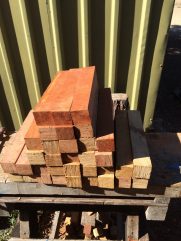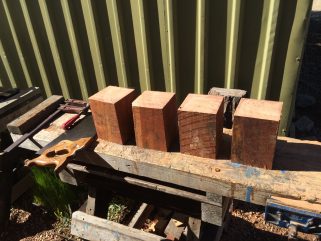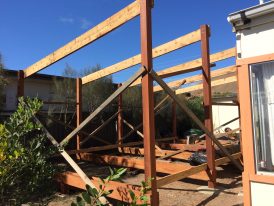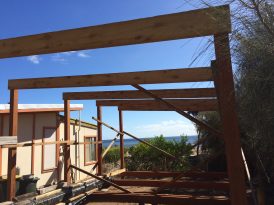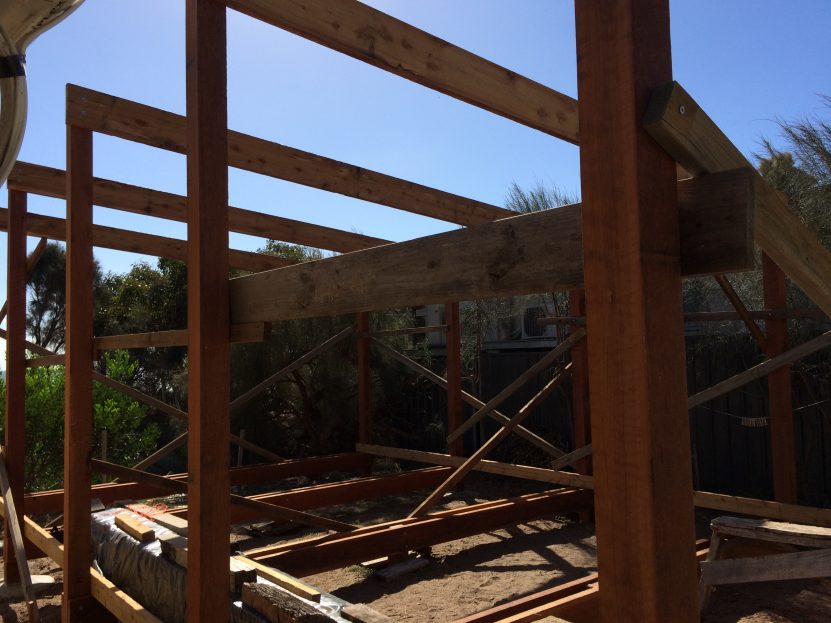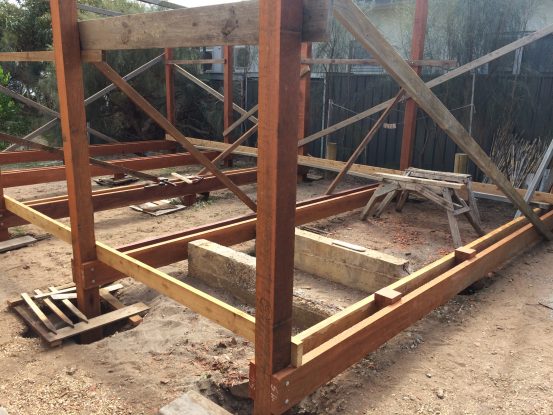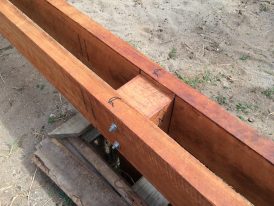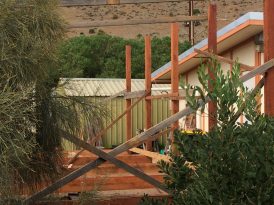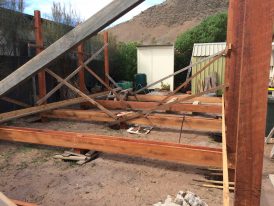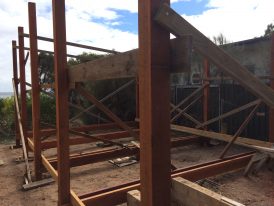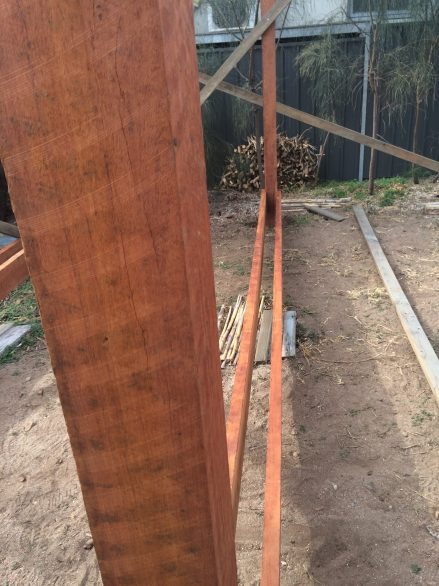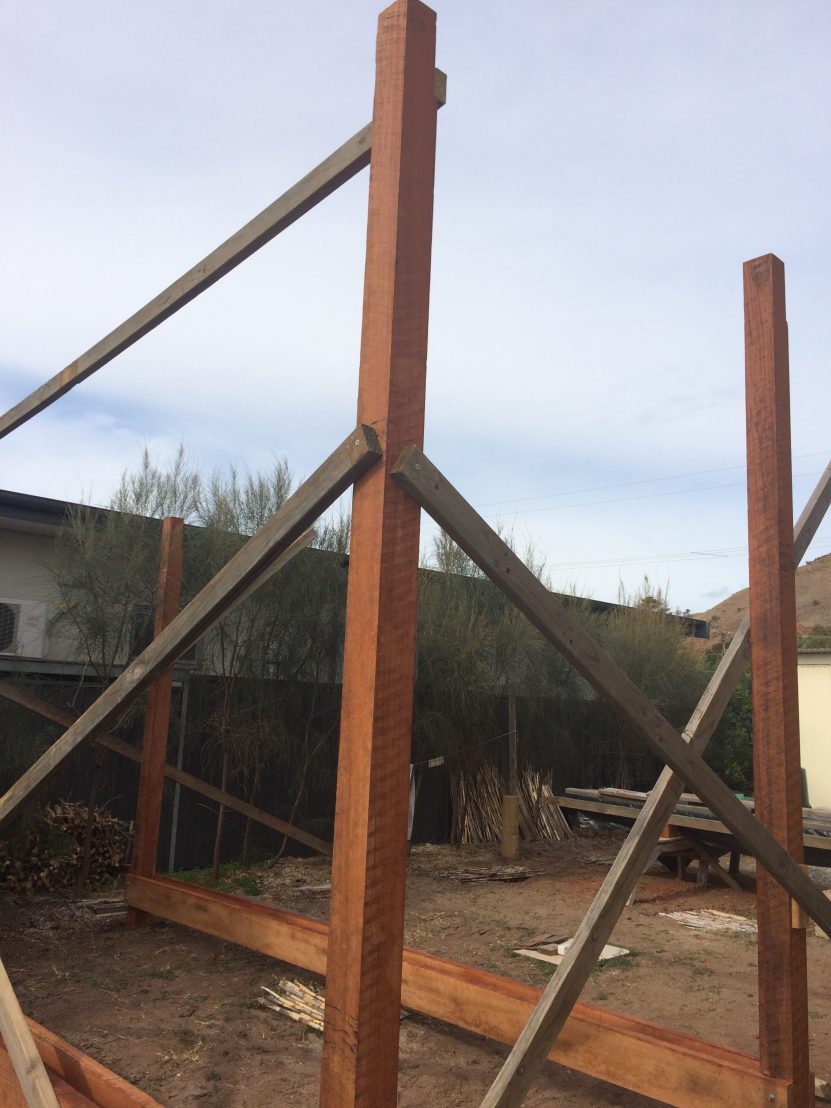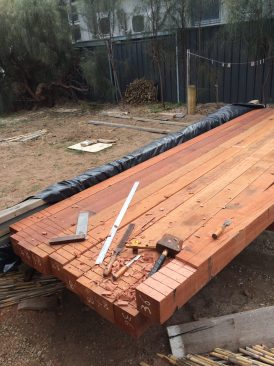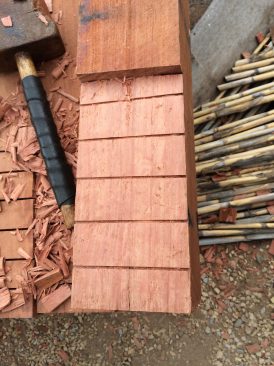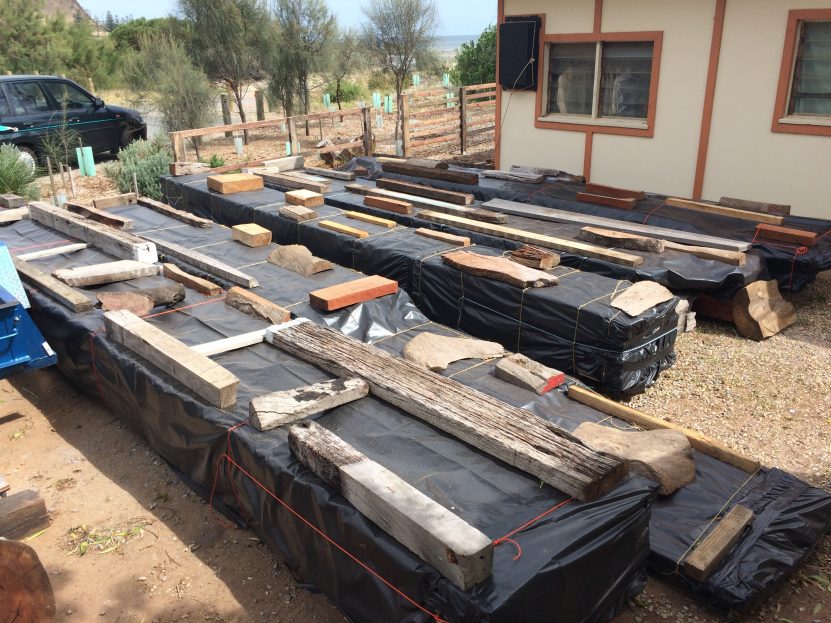DAY 5
Roland has kindly created this site, to record the construction of our Boatshed, and (possibly) subsequent boatbuilding projects. My grateful thanks to him for his generous help, and for offering it unasked. He had the vision, and the technical knowhow to make it happen.
Simon Scott has been working with me, every Friday, from the early days of construction, and will continue to be on hand until the roof is completed (next job). Simon is a man of many parts, and – fortunately for me – has a great deal of building experience and knowhow. Without his assistance, those extraordinarily heavy Ironbark posts would not be vertical.
My thanks also to fellow members of Silver Mist (SA) Pty. Ltd. for their steadfast support and encouragement over the months (and years).
This Week has seen steady, but modest progress. The photos (expertly taken by Sam, using his phone Device) tell the story, but may require some translation.
The posts, as implied above, will never again move, so I thought I might as well concrete them in, just to make sure (of course, it is specified in the plans). I have just finished the seventh hole; eight to go. I am mixing the concrete by hand – and if some of you are wondering why I am mixing concrete by hand, my best and only reply would be the one that a local shop assistant recently tried out on me: because I can.
At the time it seemed like an impressive response.
Sam has taken a photo of the Soldiers, which are made from from offcuts of Native Cypress and Ironbark. Each Soldier will be bolted vertically into a rafter, and a purlin, wherever a rafter and a purlin intersect. (Purlins are the long timbers running at right-angles to the rafters, onto which the roofing iron is fastened). The Soldiers should stop the roof coming off; I much prefer them to metal straps.
The twin bearers are Ironbark, of great weight and durability (Class 1). I am currently bolting sturdy Ironbark spacers between each double-bearer, as specified. The idea is this: if by chance our Boatshed is swept away by a hurricane, it will become airborne in one piece, and land in one piece, on its footings – and the boats inside will be undamaged.
Next job, and next Posting: the Roof.

